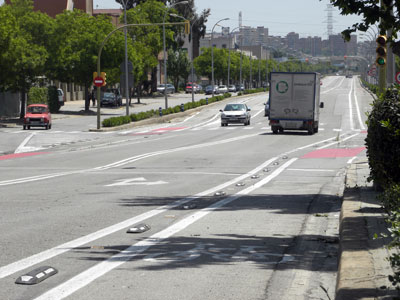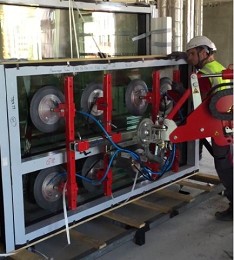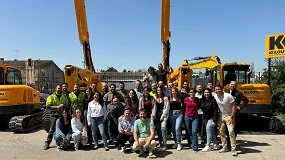Report of Seopan, Observatory of the Construction
The obsolescence of the System of Classification of Contractors of the State and his necessary review
10 October 2011

The System of Classification of Contractors (established in Spain in 1965 by the Law of Agreements of the State of 1965 and with different changes along the years), conceived in his origin like guarantee for the public administrations of the correct execution of the agreements, has remained desvirtuado with the step of the time, until converting today in a mere administrative formality of easy cumplimentación, losing like this his main character garantista of the public interest. This explains, to a large extent, one of the main problems that ail today to the market of the Spanish public work, as it is his sobredimensión, originated by the excess of offer, that brings cause of the incessant proliferation of companies, encouraged by the every time greater laxitud in the exigencia of previous requirements for the access to the public contracting, in front of an every time lower demand.
Results necessary, therefore, update the System of Classification of Contractors, adapting it to the current reality, that give him back his authentic purpose to serve of garante of the public interest, when allowing that only to the companies that are in disposal to guarantee the perfect fulfillment of the agreements entrust them the responsibility to carry them to good end.
Proposals and recommendations to update the System of Classification
• The classification in the temporary unions of companies
Unlike the offers that formulate the individual companies in public contracting, where is indispensable requirement for the company be classified in all and each one of the categories demanded in the fold, in the offers formulated in UTE, suffices with that the classifications demanded obtain by the sum of the classifications of each one of the companies grouped. Like this, our system of classification allows that a company with classification to realise/realize only a part of the work can, nevertheless, detentar a percentage of participation in the UTE very upper to the that represent the part of work for which would be capacitada concerning the total of the same, awarding him like this a power of disposal and management of the same that, individually, never could have. This evident distortion of the system gives place to ineficiencias that have to cut across.
The aim of the temporary union of companies consists in boosting the specialisation/specialization of the companies so that for determinate typologies of works, do not remain excluded by the mere fact of not having of the classifications demanded.
Would suffice to give solution to the problem with that the norm contemplate a limit of participation in the same (of 20%, for example) that only could be surpassed if the sum of the amounts of the units of work for which have the classifications in the categories demanded represent on the whole of the budget of bidding of the that form splits an upper percentage to the indicated limit. In this case, the percentage that result to relate the quoted units of work with the whole of the budget would constitute the maximum limit of participation of the company in the temporary union.

• The composition and calculation of the factors that integrate the index of company
The improvement of the classifications for the companies contractors, in addition to realising/realizing through the experience in the execution of the units and works realised/realized in each typology, comes also determined by the index of company, that is a coefficient that allows to multiply the classifications accredited by the own experience or works realised/realized. The index of company, I, varies of a minimum of 1,2 to a maximum of 4,2 (any classified company account therefore with a minimum improvement of 20% in the cuantías of classification accredited), and determines by the following formula:
I = 1,2 + T + M + F + And
Where:
I: index of company (assessment of 1,2 to 4,2)T: index of tecnicidad (assessment of 0 to 0,5)
M: index of mechanisation/mechanization (assessment of 0 to 0,7)
F: financial index (assessment of 0 to 0,8)
And: constructive experience general (assessment of 0 to 1).
The index of tecnicidad calculates by means of a table of double entrance, determining his value in function of the half annual amount in euros of the work executed in the last quinquenio by the company, and of the coefficient of tecnicidad that result in the company, and that determines by a quotient in which the numerator represents the punctuation obtained by the company considering his own technical personnel and the technical assistances hired, and the denominator the half annual amount in euros of the work executed in the last quinquenio by the company.
The problem resides, in the first place, in that the data of entrance of the half annual amount in euros of the work executed by the company define in 4 intervals with a maximum value of 15 million euros, question absolutely desactualizada if it takes into account that, for example, 95% of the adjudications of Adif and 87% of the adjudications of the General Direction of Roads recaen in companies with annual half turnover upper to the quoted value.
The previous is consequence of the remarkable increase of size purchased by the companies contractors in the last 20 years, question that has not been collected in the system of classification when having kept invariable. The second problem estriba in the determination of the coefficient of tecnicidad, that by his own definition penalises/penalizes to the companies constructors of greater annual turnover.
With the index of mechanisation/mechanization occurs something alike. The index of mechanisation/mechanization determines by a similar procedure to the explained for the index of tecnicidad, dividing several concepts by the half annual amount of work executed in the last quinquenio. The previous affects very negatively to the companies of greater turnover with parks of own machinery, obtaining next indexes to zero that do not reflect in way any the degree of mechanisation/mechanization of the companies.
The financial index is the leading elder of the desactualización current of the content of the System of valid Classification. His calculation is very simple and for each company contractor determines by the existent relation between the half annual amount of the own bottoms in the last trienio and the half annual amount of the work executed in the last quinquenio.
In function of the value obtained in each company determines in a table the value to assign to the term F of the formula of the index of company, fluctuating his value of 0 to 0,8. The maximum value of the term F (0,8) obtains in those companies in which his own bottoms (average of the last trienio) represent more than 48% of his annual turnover (average of the last quinquenio); the lower value of the term F (0) obtains in those companies in which his own bottoms represent less than 20% of the annual turnover. The problem of the determination of this index resides in the concept of half annual amount of the work executed that they accredit the companies and of his current relation with regard to his own bottoms, when having fixed some scales of assessment that date of the year 1968.

The valid methodology of obtaining of the term of the financial index, involves, on the one hand, that the companies Spanish contractors with greater absolute value of own bottoms, obtain an assessment zero or next to zero in said index, and, by another, that determinate companies with own bottoms very reduced obtain the maximum assessment of the index consequence to have a volume of turnover abnormally low. Likewise, if we take into account that the greater companies Spanish constructors develop in some cases the half of his activity in the international market where in place of systems of classification like the Spanish, exist other measures to measure the solvencia financial of the companies, necessarily would have to discriminate the national activity of the international to effects of the determination of the financial index.
To the closing of the exercise 2010, the activity international constructor of the 6 companies of construction of the Ibex 35, represented at all less than 45,4% of the total construction realised/realized. It does not do lacking to resort to statistical any to affirm that the degree of internationalisation/internationalization of the big Spanish constructors, is radically distinct to the that could have in 1968.
• Solvencia Business versus size of the work licitada
The system of valid classification, regarding the direct classification in subgroups, requires that the company accredit his solvencia economic and financial by means of the availability of own bottoms according to the corresponding balance to the last exercise of the annual accounts approved. For this the own bottoms demanded vary of 6.000 euros in the category to 480.000 euros for the category F.
By the contrary, the draft of Royal decree in tramitación modifies the valid criterion proposing that the company accredit to have of an equal net heritage or upper to 8% of the matter upper limit of the cuantía of the agreements to which the category reached allows to opt.
With exception of the previous question, and of the commented for the obtaining of the financial index, the system of valid classification does not establish direct relation any between the heritage of the companies contractors and the size of the public work that licita. In this regard, it has to reestudiarse this question, being of the all precise enter in the valid legislation that, with independence of the categories of classification that are exigible to the companies in the procedures of adjudication of agreements of works by the public administrations, the organs of contracting would have to demand anyway to be able to concurrir in the procedures of adjudication that the net heritage of the company licitadora that deduce of the last annual balance approved was not inferior to a determinate percentage of the budget of bidding of the agreement, included VAT.















































































